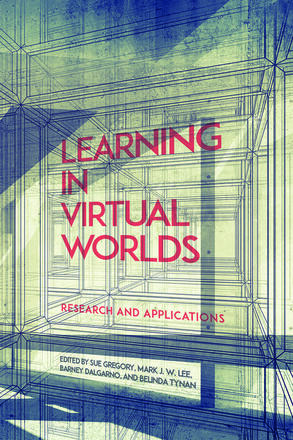
A collection of case studies that outline best practices for the use of
3D virtual worlds in post-secondary learning and teaching.
Description
Three-dimensional (3D) immersive virtual worlds have been touted as
being capable of facilitating highly interactive, engaging, multimodal
learning experiences. Much of the evidence gathered to support these
claims has been anecdotal but the potential that these environments
hold to solve traditional problems in online and technology-mediated
education—primarily learner isolation and student
disengagement—has resulted in considerable investments in virtual
world platforms like Second Life, OpenSimulator, and Open Wonderland by
both professors and institutions. To justify this ongoing and sustained
investment, institutions and proponents of simulated learning
environments must assemble a robust body of evidence that illustrates
the most effective use of this powerful learning tool.
In this authoritative collection, a team of international experts
outline the emerging trends and developments in the use of 3D virtual
worlds for teaching and learning. They explore aspects of learner
interaction with virtual worlds, such as user wayfinding in Second
Life, communication modes and perceived presence, and accessibility
issues for elderly or disabled learners. They also examine advanced
technologies that hold potential for the enhancement of learner
immersion and discuss best practices in the design and implementation
of virtual world-based learning interventions and tasks. By evaluating
and documenting different methods, approaches, and strategies, the
contributors to Learning in Virtual Worlds offer important
information and insight to both scholars and practitioners in the
field.